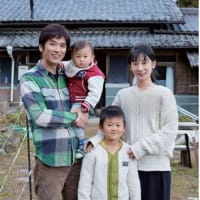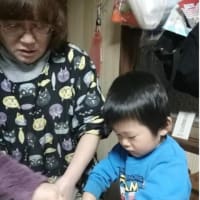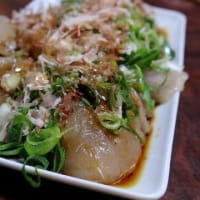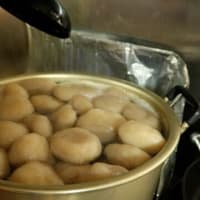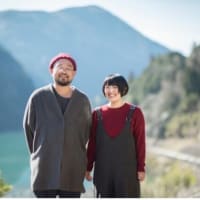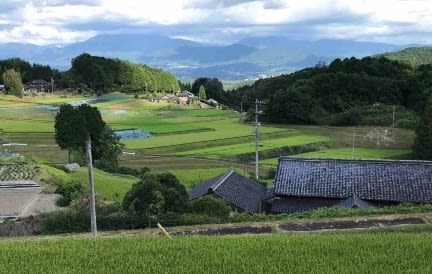
(The number of applicants has been filled and the application process has been closed.)
Explore Satoyama Scenic Beauty: A Village retreat in Japan’s hidden heritage
March 24th - March 25th, 2024
Graduate School of Environmental Studies, Nagoya University is developing a Satoyama tour program in a mountain village, Kasagi, Ena city, Gifu. It is a hidden destination for those seeking unpretentious experience in Japan’s human-nature coexistence Satoyama life.
What is included:
- 2 days, 1 night stay at Niwa-Bunko, the hostel and also the book store using a quaint Japanese style house
- Breakfast, lunch and dinner (All Japanese cuisines)
- Hostel Amenities: Free WIFI, all kitchen facilities in clouding beverages(water, coffee and tea) and seasonings(salt,sugar, oil: Feel free to bring some foods and snacks), all bathroom equipment(All soaps, towels, toothbrushes and pastes, laundry machines and the dryer), air conditioner, four Japanese style beds and two normal beds
- Narrated guided tour in English
- About 6 miles trekking tour along the Nakasendo
- Satoyama tour including 350-year-old terraced rice paddies
- Shrines and several Buddhist’s monuments tour
- Cooking Japanese traditional “konnyaku” workshop
Please Note
- The program will take place rain or shine but we will drive you around when heavy rains
- The tour/activity will have a maximum of 6 people on a first-served basis.
- Shared accommodation for a maximum of 3 people. Rooms for Men and Women are separated.
- Participation fee: Free (However, participants are responsible for their own travel expenses to JR Takenami Station and from JR Ena Station)
- You will be asked your impressions and comments for our development
- Photos and videos from this tour may be used on various social media platforms and web site for in future tour announcements. There is a possibility of media coverage.
Clothing:
- Comfortable and functional trekking clothing including rain wear
- The average temperature at the end of March is a high of 15 degrees celsius and a low of 1 degrees.
- Ena city has a large difference in temperature between daytime and night
- Bring layers for different kinds of weather
Miscellaneous items:
- Some foods or snacks and beverages
- Adapter for charging
- Poncho for bags if they are not waterproof
- Bug repellent
- Any medication or medical needs
Travel Suggestions:
- By train
At Nagoya station, take the JR Chuo Line bound for Nakatsugawa and get off at Takenami Station. It will take about a hour. The train departs at 8:36 Nagoya and reach at 9:53 Takenami is available.
- By car
Take the IC Ena exit on the highway and park your car at the paid parking lot near Ena station. Then, take the train bound for Nagoya and one stop will get you to Takenami station. We will provide a car to Ena station on the way back.
Tour Itinerary
Day1: Sunday March 24
10:00 Meet at Takenami Station on the JR Chuo Line
10:00-13:00 Enjoy 6 miles Trek and the hidden historical landmarks with guides
13:00 Lunch: Try a Japanese style lunch box at the farmer’s market
14:00-17:00 Visit a 350-year-old terraced rice field to learn how people have lived in harmony with nature.
17:00 Arrive at the accommodation, Niwa-Bunko, an old house bookstore and guest house
18:00 Dinner: Local traditional dishes at Niwa-Bunko
Day2: Monday March 25
8:00 Cook Japanese style breakfast with guide at Niwa-Bunko kitchen
10:00 Trek 500 steps up to a Kawai shrine and several Buddhist’s monuments
12:00 Lunch at an old private house and experience making konnyaku, a traditional food
14:00 Trek to the water source of the house up to a small valley
15:00 Get your feedback the program to develop and improve the tour program
16:00 Leave for JR Ena station by car
16:30 Disperse at Ena Station on the JR Chuo Line
Application
For applications and inquiries, please fill out the form below and submit.

Living in Satoyama throughout the history
To live with utilizing the climate, not against it.
Living with respect for ancestor worship, nature beliefs, etc.
Careful cooking the foods produced on the land.
To situate one’s life between mountains and rivers.
Kawai District, Kasagi Town
That is the destination of this trip. In Ena City, Gifu Prefecture, the "navel" of Japan, there is a village nestled in the mountainside of a valley. At the foot of Mount Kasagi, which looms over Ena City, houses stand surrounded by fields, mountains, forests, and rivers.
Nearby, there is water from the mountains, rice paddies that produce rice in abundance, fields that yield delicious vegetables, trees that can be used as lumber, and the wisdom to make use of these resources in daily life.
The area was affected by volcanic eruptions tens of millions of years ago, and huge rocks lie scattered all over the region, The soil is also stony and not at all rich.
However, the ancestors of the inhabitants, who moved about 350 years ago. They cleared forests, created terraced rice paddies, built shrines, and established villages.
Even today, shrines and cemeteries associated with ancestors are scattered throughout the village, We live richly every day, feeling our souls. Forgotten traditional Japanese culture and scenery can be found here.
Join us for an irreplaceable journey on the trails, listening to the residents' stories and learning about their traditional culture, food, and even the ecosystem of the satoyama.
Main Guide

Masao Takano, Professor, Graduate School of Environmental Studies, Nagoya University.
He is involved in the revitalization of satoyama area. He is the author of "The Philosophy of Nature: A Story of Satoyama to Liberate the Mind Controlled by Money," published by Heureka, 2021, and "Let's Design a Sustainable Way of Life," Akashi Shoten, among others.
“In this region, there are communities closest to a sustainable society in the world even though with many challenges. Please enjoy and experience the beautiful scenery and rich culture of life.” - Masao TAKANO
Getting to your destination
If coming by train, transfer to the JR Chuo Line at Nagoya Station and go to Takenami Station. The train which departs 8:36 Nagoya to 9:53 Takenami is available.
If you are coming by car, get off at IC Ena, park your car at the Ena Station multi-story parking lot, and take the JR Chuo Main Line to Takenami Station. (A car will take you to Ena Station on the way back.)
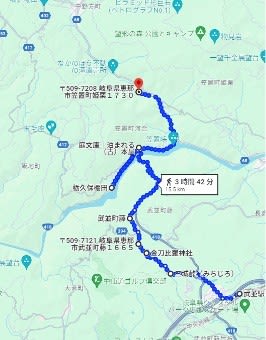
Walking along the old road, we headed for the terraced rice fields. Enjoy the original landscape of the satoyama.
This time, the tour will last two days and one night, starting from Takenami Station on the first day and heading for Kasagi-cho via the Nakasendo, an old road. Enjoying the original satoyama landscape typical of the area, we will walk along the trail with local shrines and farmhouses by our side.
After walk along the banks of the Kiso River, one of Japan's three major rivers, which flows through Kawai-ku, Kasagi cho. You will reach Tochikubo, the destination of the first day.
Lunch will be a delicious “bento” box full of vegetables prepared by the mothers of the "Nakanoho Fudotaki Yasai no Kai" in the neighboring town of Nakanohou.

Tochikubo Terraced Rice Fields
The Tochikubo Terraced Paddy Fields in Kawai, Kasagi-cho, Ena City, Gifu Prefecture, are stone-piled terraced paddy fields in a small village that has been cultivated since the middle of the Edo period (around 350 years ago). The unique landscape where beautiful terraced-rice paddies, houses, shrines, and cemeteries coexist in harmony in the steep terrain along the Kiso River is very picturesque, and was selected as one of the "21 Best Terraced Rice Paddies in Gifu" in 2010 to be passed down to future generations. The name "Tochikubo" means "a hollow with horse chestnut trees," probably named so by the ancestors of the residents because there used to be many horse chestnut trees in the area.
In the Tochkubo terraced rice paddies, one can still see the traditional appearance of Japan's satoyama, which is now being lost.
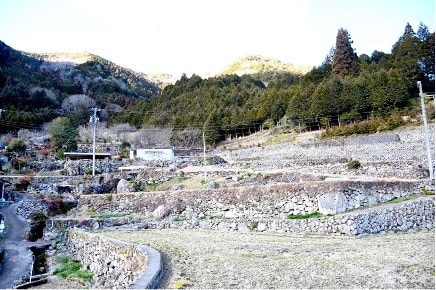
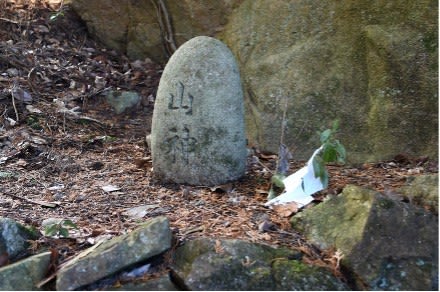
Guide to Tochikubo Terraced Rice Paddies; Kazushi Endo, Kawai-ward Shinto priest, Yuzu Kumiai Secretariat

At the Tochikubo terraced paddy field, we will talk with Mr. Endo, a Shinto priest of Kawai-ku and the manager of the Kasaki-cho Yuzu Kumiai (Yuzu Association).
Mr. Endo was born and raised in Tochikubo. When he was a small child, he saw his parents' generation protecting the terraced rice paddies and struggling to cultivate rice. Through his life, you can feel the sustainability of the satoyama through his efforts to preserve the traditional way of life and to pass the terraced rice fields on to the next generation.
Also remarkable is Endo-san's way of protecting the lives of Kawai residents as a Shinto priest and as a Yuzu Kumiai office worker. Please take a walk and listen to Endo-san's stories.
Overnight stay at Niwa Bunko, a guesthouse and secondhand bookstore in an old private house, while enjoying local cuisine
After exploring Tochikubo, visit the nearby Niwa Bunko, a rare bookstore where you can stay overnight. Here, you can enjoy the atmosphere of an old private home and deepen exchanges with the local residents over a meal of local cuisine.
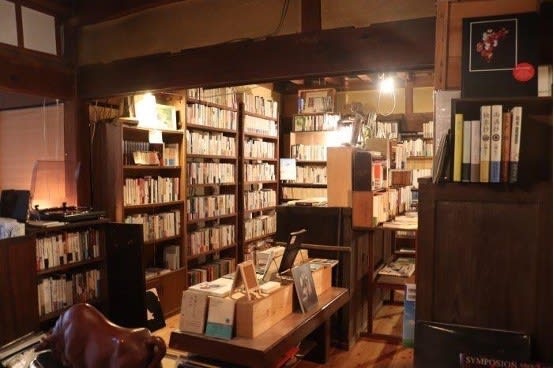


The owner of Niwa Bunko, Mr. and Mrs. Momose, the guide of the accommodation
Niwa Bunko is a bookstore selling used and new books and is located on a hill overlooking the Kiso River.
The view from the garden library is overwhelming, and the Kiso River you see when you wake up in the morning will soothe your soul.
Yuta Momose is from Ena City. His wife, Miki Momose, is from Okinawa Prefecture and moved here from Tokyo with Yuta. Let's talk about running a bookstore in Kasagi Town and creating a place where people can interact with each other.
Local Cuisine Guide
Akiko Suzumura, Ms. Endo's sister Lives in Kawai is a cook, specialist in Japanese cuisine. She makes a rich dinner with local dishes from the area, using vegetables and other products from the region.
Climb the 500 steps to the shrine and trail to the old farmhouse
On the second day, we will leave the Niwa Bunko and go to Kawai Shrine, a local shrine. There are approximately 500 steep steps built in the Taisho Era (1912-1926). Think about the history of local beliefs.
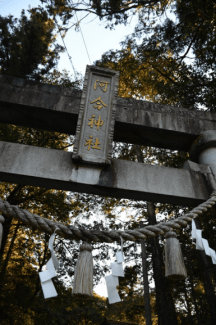
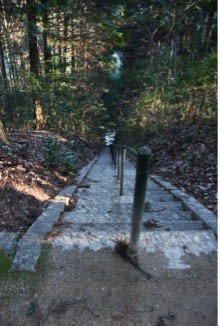
Go down the road and walk along the farm road to today's destination, the "cave". As you pass along the old road, you can see old-fashioned Jizo Bosatsu (Jizo Bodhisattva) here and there.
It also offers a glimpse into the mysterious megalithic faith. Let's look for megaliths as we travel up the Nakanohou River, which is on an active fault line.
Kasuri district, Kawai ku are believed to have been established by familes that migrated from present-day Gujo City in the late Edo period.
The house where we will experience making local cuisine is an old house that has existed for about 150 years, but there is no tap water or sewerage system, and the bath is heated with firewood from the hill behind the house.
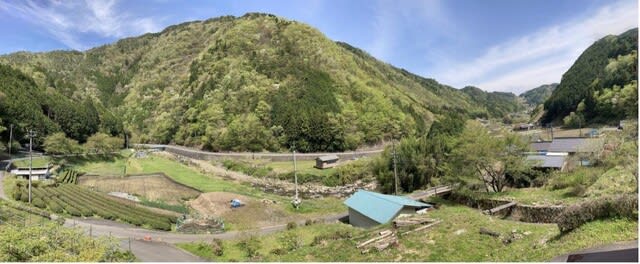
Konnyaku, experience to make traditional food
Konnyaku is widely grown in Ena City. It is a solid food made from taro type potatoes, and is gaining popularity today as a healthy food due to its high fiber and low calorie content.
This time, the konnyaku will be made from locally harvested potatoes and served freshly sliced (raw).
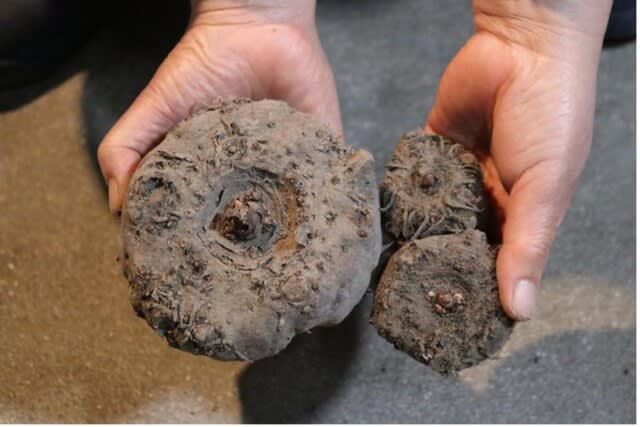


Mayumi Wada, Konnyaku Guide
She has been married in Hora for ten years.... She works as a caregiver and also grow vegetables in the field. Wada's mother, who lives in a neighboring town, taught her how to make konnyaku.
In addition to making konnyaku, they usually make seasonal local dishes such as hoba sushi using leaves of the magnolia tree and imogonemochi made from satoimo (Japanese potatoes).

Ayami Sato, Akihiko and Chiune
Mayumi's husband, and children.
Mayumi will talk about how the younger generation is reexamining their relationship with satoyama in today's world, such as living with nature while receiving the benefits of the mountains and their relationship with rivers.

Living without tap water supply. Let's trek to find the source of water!
After having a lunch including konnyaku at a farmhouse, if time permits, Mayumi's son, Chiune, will lead you on a trek to the headwaters of the mountain.
A 15-minute walk up the mountain behind this house is the water source used by the community.
The water supply penetration rate in Japan is said to be 98%, so let's take a look at how these households, which make up the remaining 2% of the population, use small river water for their daily lives.
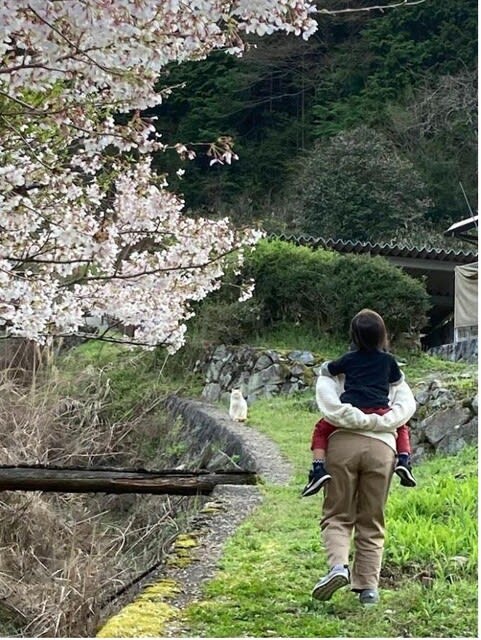
After the tour is over, you will have a chance to reflect in a workshop led by the main guide. Listen in and find out how other participants felt about their trip to the area.
We will drive you to Ena station. This is the end of the trip.
Acting Manager:Ayami Sato
Representative of Leone.,LCC
Inquiry contact
If you have any question, please contact us at the following contact address/e-mail address: farmroots.kasagi.ena@gmail.com
Contact person: Ayami Sato
Contact number:+81 90 7856 8132
Address: Himeguri1730,Kasagi-cho,Ena,Gifu 5097208
E-mail address: farmroots.kasagi.ena@gmail.com
Established on:07/09/2018











